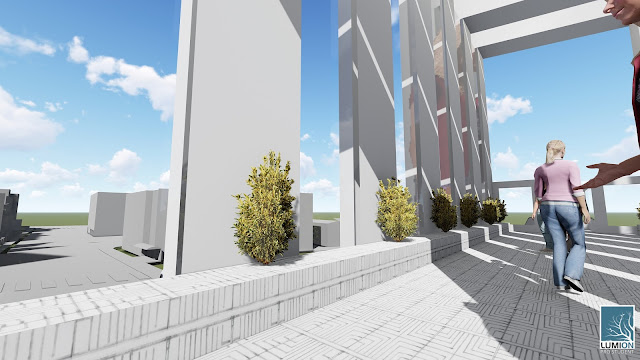Final Light Rail Stop (Lumion)
The over-arching theme for this design is blending technology to it urban and university environment. Both Jenny Wu and Aldof Loos construct their architectural concept and ideology on the notion of technology since Jenny Wu maneuvers with computational designs and parametrism and Loos demands one's building to match according to its era (Age of Advanced Technolgy).
In this scene, the main concept explored is the concept of Visual Void, as represented by the mesh-like columns which support the roof. When looked from above, it omits the perception of being pulled in, similar to that of a black hole.
The main concept here is the concept of Inlay. Multiple layers of arches, yet they all cover the same path and support the glass panels installed to its sides and ceiling. It also conceptualizes the idea of parametrism when looking from above. This was inspired from Jenny Wu projects which explore parametrism.
The glass panel ceiling is to provide users and the station with natural lighting, preserving energy usage. It was originally planned for the roofs to have solar panels installed as a concept of clean energy and technology to meet modern ideals, meaning during the day, natural sunlight would be used as the light source as the solar panels charge and during the night charged energy would be used to supplement electrical power from the grid. Yet to preserve the image of the station, the installation was omitted.
In retrospective, the project aims to unite the concepts of Loos and Wu. By designing a structure without excessive accessories, retaining it to the original purpose and as well as making it relevant to modern architectural concepts as stated by Loos. Wu's concept is produced by exploring parametrism, found in the arches and the mesh columns, which represent its relevance to present ideologies.







Comments
Post a Comment